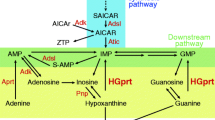Abstract
Treatment strategies in mitochondrial diseases consist of several drugs that diminish the deleterious effects of the abnormal respiratory chain function, reduce the presence of toxic agents or correct deficiencies in essential cofactors. In this study we evaluated the monitoring of tocopherol, carnitine and ubiquinone concentrations in a group of paediatric patients during a follow-up period of 18 months and the response to treatment of these patients by means of the determination of blood lactate, plasma alanine and oxygen consumption by lymphocytes in relation to the clinical status of the patients. Tocopherol, carnitine and ubiquinone concentrations were easily corrected with therapy. Blood lactate proved the best biochemical tool to assess the response to treatment in paediatric patients. According to our results, improvement or stabilization of the clinical course seems to be more related to the biochemical or molecular defect than to the effectiveness of the treatment.
Similar content being viewed by others
REFERENCES
Artuch R, Vilaseca MA, Farré C, Ramón F (1995) Determination of lactate, pyruvate, acetoacetate and β-hydroxybutyrate with a centrifugal analyser. Eur J Clin Chem Clin Biochem 33: 529-533.
Artuch R, Quintana M, Moyano D, Moreno J, Puig RM, Vilaseca MA (1997) Determinación de carnitina en plasma por un procedimiento espectrométrico. Valores de referencia para una población pediátrica.Quím Clín 16: 397-400.
Bakker HD, Scholte HR, Jeneson JAL (1993) Vitamin E in a mitochondrial myopathy with proliferating mitochondria. Lancet 342: 175.
Bendahan D, Desnuelle C, Vanuxem D, et al (1992) 31PNMR spectroscopy and ergometer exercise test as evidence for muscle oxidative performance improvement with coenzyme Q in mitochondrial myopathies. Neurology 42: 1203-1208.
Bernsen PL, Gabreñls FJM, Ruitenbeek W, Sengers RCA, Stadhouders AM, Renier WO (1991) Successful treatment of pure myopathy, associated with complex I deficiency, with riboflavin and carnitine. Arch Neurol 48: 334-338.
Calvani M, Koverech A, Caruso G (1993) Treatment of mitochondrial diseases. In Di Mauro S, Wallace DC, eds. Mitochondrial DNA in Human Pathology. New York: Raven Press, 173-198.
Campos Y, Huertas R, Lorenzo G, et al (1993) Plasma carnitine insufficiency and effectiveness of L-carnitine therapy in patients with mitochondrial myopathy. Muscle Nerve 16: 150-153.
Ernster L, Dallner G (1995) Biochemical physiological and medical aspects of ubiquinone function. Biochim Biophys Acta 1271: 195-204.
Herbert V (1996) Prooxidant effects of antioxidant vitamins. J Nutr 126: 1197S-1200S.
Ichiki T, Tanaka M, Nishimiki M (1988) Deficiency of subunits of complex I and mitochondrial encephalomyopathy. Ann Neurol 23: 287-294.
Lowry OH, Rosebrough NJ, Farr AL, Randall RJ (1951) Protein measurement with the Folin phenol reagent. J Biol Chem 193: 265-275.
Matthews PM, Ford B, Dandurand RJ (1993) Coenzyme Q10 with multiple vitamins is generally ineffective in treatment of mitochondrial disease. Neurology 43: 884-890.
Morris AAM, Leonard JV (1996) The treatment of congenital lactic acidoses. J Inher Metab Dis 19: 573-580.
Moyano D, Vilaseca MA, Pineda M, et al (1997) Tocopherol in inborn errors of intermediary metabolism. Clin Quim Acta 263: 147-155.
Pons R, De Vivo DC (1995) Primary and secondary carnitine deficiency syndromes. J Child Neurol 10: 2S8-2S21.
Przyrembel H (1987) Therapy of mitochondrial disorders. J Inher Metab Dis 10: 129-146.
Roodhooft AM, Van Acker KJ, Martin JJ, Ceuterick C, Scholte HR, Luyt-Houwen IEM (1986) Benign mitochondrial myopathy with deficiency of NADH-CoQ reductase and cytochrome c oxidase. Neuropediatrics 17: 221-226.
Roe DS, Terada N, Millington DS (1992) Automated analysis for free and short-chain acylcarnitine in plasma with a centrifugal analyser. Clin Chem 38: 2215-2220.
Rustin P, Chretien D, Bourgeron T, et al (1994) Biochemical and molecular investigations in respiratory chain deficiencies. Clin Chim Acta 228: 35-51.
Sengers RCA, Fischer JC, Trijbels JM, et al (1987) A mitochondrial myopathy with a defective respiratory chain and carnitine deficiency, Eur J Pediatr 140: 332-337.
Shoffner JM, Wallace DC (1994) Oxidative phosphorylation diseases and mitochondrial DNA mutations: diagnosis and treatment. Annu Rev Nutr 14: 535-568.
Taylor RW, Chinnery PF, Clark KM, Lightowlers RN, Turnbull DM (1997) Treatment of mitochondrial disease. J Bioenerg Biomembr 29: 195-205.
Zierz S, Von Wersebe O, Bleistein J, Jerusalem F (1990) Exogenous coenzyme Q (CoQ) fails to increase CoQ in skeletal muscle of two patients with mitochondrial myopathies. J Neurol Sci 95: 283-290.
Rights and permissions
About this article
Cite this article
Artuch, R., Vilaseca, M.A. & Pineda, M. Biochemical monitoring of the treatment in paediatric patients with mitochondrial disease. J Inherit Metab Dis 21, 837–845 (1998). https://doi.org/10.1023/A:1005470702369
Issue Date:
DOI: https://doi.org/10.1023/A:1005470702369




